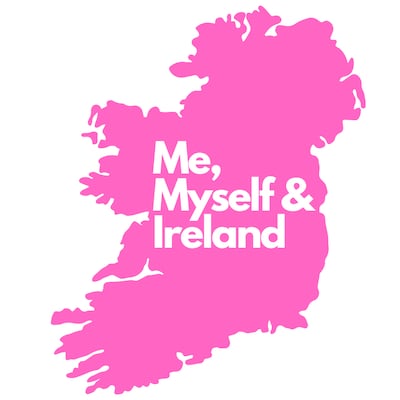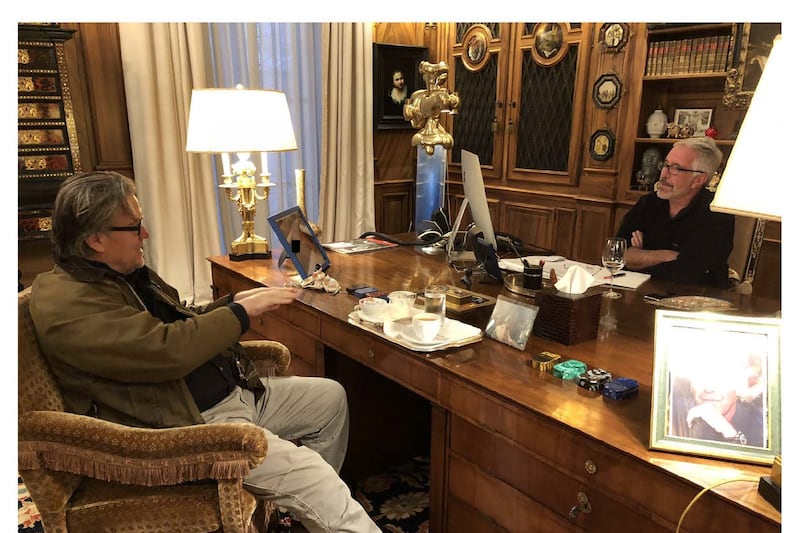I grew up on a little farm in west Cork, four miles (6.4km) from the nearest village of Ballymakeera. We saved hay in summer, cut turf on the mountainside, grew vegetables and we had maybe half a dozen milking cows. When I was a young teenager, we grew strawberries commercially. We would plant an acre or two, harvest them and sell them in Cork city and that would provide us with enough money to buy our winter clothes.
It sounds romantic, and it was, but it was also very hard work. There were these seemingly endless seasonal preoccupations like spraying potatoes and picking strawberries that were physically demanding. I remember picking potatoes out of the ground in late autumn and struggling not to cry with the pain in my hands. Work was work back then.

We never shirked from it and I have fond memories of working on the land late into the evenings, especially with my dad. He passed away in January, but my mother is still alive and she’s hale and hearty. As an only child, she had always wanted a big family. She certainly got that; I’m one of 12 children. My dad was the principal at the local vocational school and my mother had plenty to do at home. She would keep each of her children home from school one day a week so she could get to know us. My dad always considered her the learned one.
I started singing at age five in the local church choir. All of my brothers and sisters were good singers but only the boys joined the choir because in those days it was men only and that was that. Growing up, sean-nós was the common singing style in my region so it was the music in my head. Later I became aware that there were other versions in other regions in Ireland. In parts of Donegal and Connemara, Waterford and west Kerry, they have their own repertoire and dialect, although they all share some characteristics. Sean-nós produces a very beautiful sound. It’s a little stark, very strong and it can be tender. Most of the songs are old – 17th and 18th century – but they tell profound stories.
READ MORE
In the 1950s, 1960s and 1970s, many traditional musicians felt marginalised. I heard first-hand accounts of musicians and singers being asked to leave licensed premises. There was a sense of shame about our own culture, a sense of its inferiority and lack of practical utility. I think there was a general sense of cultural inferiority that weighed heavily on Irish people for many years. Ireland had enormous poverty and emigration and we had the extraordinarily oppressive ways of the church; all of these forces combined to create a general lack of confidence. This has changed dramatically. Now we regard our finer traditional musicians as heroes.
I grew up speaking Irish and all of the songs I sang in recent years with The Gloaming were in Irish. The response to that music was such an emotional one you’d have to conclude that music is a superlative bridge between people. Of course audiences abroad didn’t understand what I was singing about, but they did receive the emotional meaning and they seemed to receive it very fully. I think Irish music has that potential in spades.
In the mid-1990s, I signed a record deal with Peter Gabriel’s Real World Records after sending in a cassette tape. Peter actually phoned me up, but I wasn’t home to take the call – my wife wanted to save the message. I signed a record deal with them and made three or four solo records before recording some stuff with the Afro Celtic Sound System, a group of musicians from Senegal, the UK and Ireland. When the music was released it started selling enormous amounts. We decided to become a band and I was with them for about a dozen or more years. We sold a couple of million records.
This was around the time dance music was taking off in Britain. We had techno dance culture mixed with traditional Irish music, African polyrhythmic and chant. We toured the world many times over, but I became alienated from the traditional music fraternity in Ireland. Sadly at that time, people weren’t open to a sean-nós singer performing with Africans. I think it was hard for the more orthodox voices in traditional music to accept or even understand it. That music was 30 years ahead of its time.
I always wanted them to be comfortable with the physical reality of Ireland because that reality is very beautiful and very deep
The Afro Celtic Sound System had a wonderful harpist from Brittany and since then I’ve loved its sound and wanted to interact with it in a more direct way. I got funding from Harp Ireland and the Arts Council to commission a young composer, Connor Way, whom I’d met while teaching at Princeton a few years ago, to write a couple of arrangements of old sean-nós songs for the harp. I wanted to try to bring the harp tradition and sean-nós tradition together across time and space. Harpist Parker Ramsay will play Connor’s pieces in Dublin on Lá na Cruite, Harp Day [October 19th].
Where I live in Kilkenny reminds me very much of where I grew up. There’s lots of hills, there’s even some rough ground and a lot of trees. I still love to connect with the west though and every year we go to west Kerry on holidays. My kids really love it there. They speak Irish and they’ve been to the Blaskets with me. I always wanted them to be comfortable with the physical reality of Ireland because that reality is very beautiful and very deep. I feel sure they know that now.
In conversation with Marie Kelly. This interview, part of a series, was edited for clarity and length. Lá na Cruite | Harp Day 2024, takes place on Saturday, October 19th, with more than 100 events to celebrate the harp worldwide. Iarla Ó Lionaird will perform as part of Ceiliúradh Cruitireachta at the Royal Irish Academy of Music’s Whyte Recital Hall at 5pm on Sunday October 20th. See www.riam.ie for more information

















